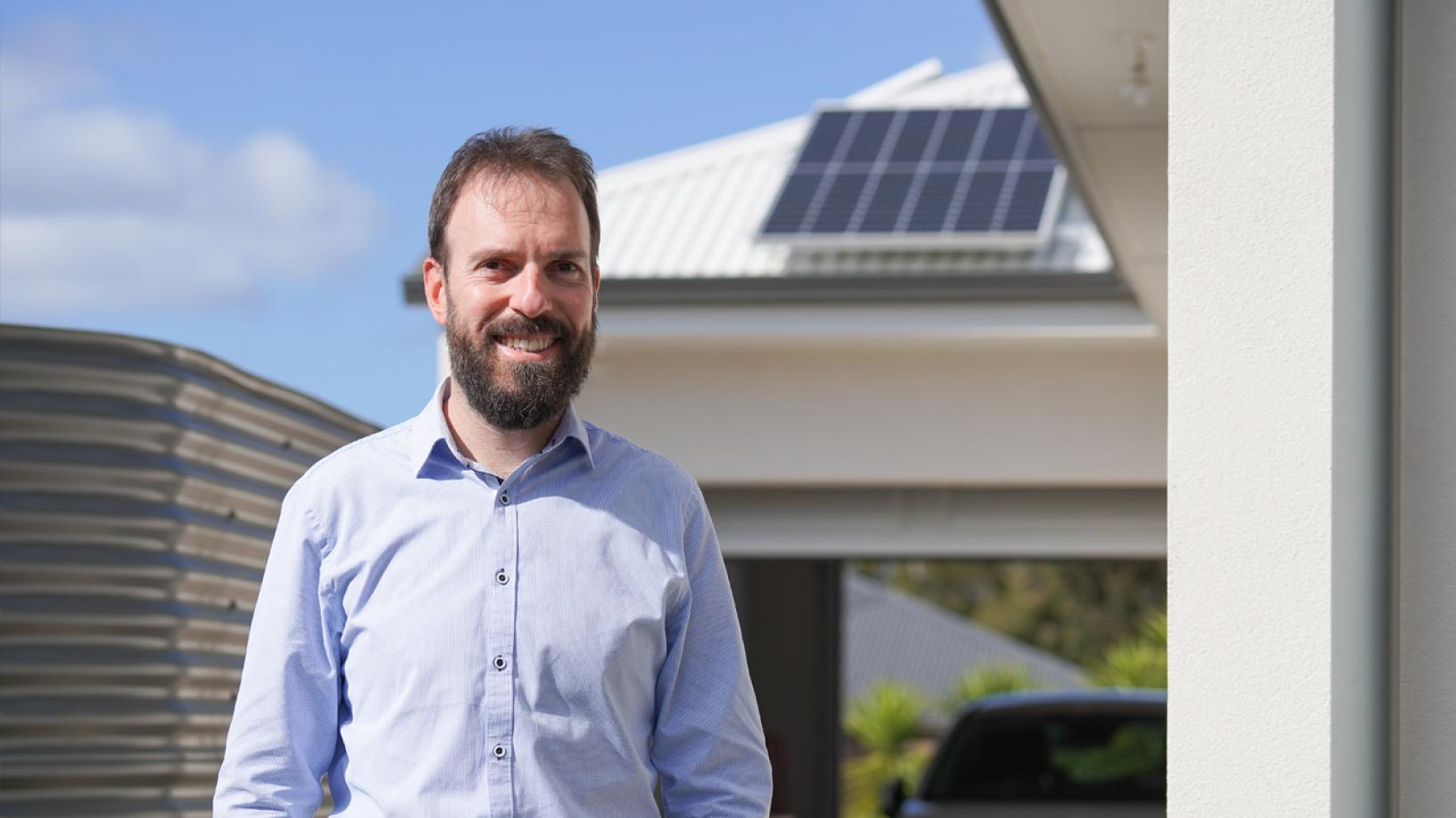The Covid-19 pandemic has significantly changed the way Australians use energy and the decisions they make around it, according to a newly-released study.
Australians have responded to the pandemic by purchasing large appliances and changing the times of day when they use energy, according to the Energy Consumer Behaviour Survey (ECBS), a study commissioned by Energy Consumers Australia with input from Monash University’s Digital Energy Futures Project.
As the world gathers for COP26 in Glasgow, the survey gives insight into how the behaviours and choices of households and small businesses are shaping and influencing Australia’s energy transition.
It finds that 41% of respondents say their household has become more interested in reducing energy use since the pandemic.
But many Australians’ use and purchasing of appliances appear to have increased during that period, with 30 per cent of households reporting having bought a large appliance during the past year and a third of respondents now owning more than two fridges or freezers.
“We can see just how much Covid has changed our energy behaviour as a nation, from the food we eat and how we store it to our use of heating and cooling and the appliances we are buying and intending to buy,” Energy Consumers Australia Chief Executive Lynne Gallagher said.
“This survey is a treasure trove of insights for anyone who is working to bring about the future energy system we need – one that meets consumers values, needs and expectations.”
At a time when governments and other decision makers are seeking to shift or reduce household energy use as part of the transition to a clean energy future, Covid has impacted both Australians’ energy habits and their expectations for the future.
- 59% say they are cooking at home more.
- 40% say their house uses more heating and cooling since the pandemic.
While some of these impacts may be temporary, others appear more lasting. The past 12 months has accelerated a move, already underway, towards the proliferation of devices and appliances in Australian homes.
- 52% say their household has more digital devices running than 5-10 years ago.
- 42% say their kitchen has a wider variety of appliances than 5-10 years ago.
And while Australians are reporting they’d like to use less energy, confidence in doing so over the next 5-10 years is mixed.
- 24% of respondents think their house will use more cooling during that period.
- 17% think their home will use more heating.
- 29% think it likely or certain they will use air conditioning to keep a pet comfortable or healthy.
The ECBS is a companion to the Energy Consumer Sentiment Survey, the nation’s leading indicator of what Australians think about energy. Carried out by research firm Essential, it uses interviews with 2771 household and small business consumers across all states and territories to track the nation’s energy behaviour. The survey was contributed to by Monash University’s Digital Energy Futures Project and contains a standalone section to inform their research.
“The ECBS is the first national survey to track many of these lifestyle and technology trends to understand how Australians think about and use energy,” said Dr Larissa Nicholls, part of the Digital Energy Futures team and a Senior Research Fellow in the Emerging Technologies Research Lab. “This is critically important to efficiently plan and build our future energy system.”
When we use energy
“Understanding when and how consumers are using energy is key to exploring how we can design a modern energy system that does not cause them inconvenience or frustration,” Ms Gallagher said.
"It can allow those who run the system to provide customers with choices and rewards for using energy in different ways -- helping us transition to a clean energy system that is affordable for everyone because it avoids unnecessary infrastructure investment."
The survey finds that:
- The most popular time (36%) for using air conditioners was afternoon/evening (3pm-8pm).
- Pool pumps were more commonly used between 9am and 3pm (40%).
- Respondents felt it would be more achievable to change their pool pump time ofuse than for their air conditioner. Only 36% felt it would be very easy or easy to vary their useof air conditioners to a time when there was less demand for energy.
- Large appliances (dishwasher, washing machine, dryer) were most typically used between9am and 3pm (35%).
- 63% of large appliance users felt it would be very easy or easy to time-shift their useto periods when there was less demand for energy.
Consumers are willing to help
The survey explores how willing consumers are to reduce or shift their energy use at times when demand spikes, as well as what might motivate them to do so.
Asked what it would take to get them to reduce energy use “as much as possible” during such an event, 30% said they would do so only if there was a financial incentive, but 44% said they would, even without a financial incentive. Only 8% said they would be unwilling to take action.
These numbers did not shift significantly when consumers were presented a similar scenario but asked to change their energy use only “a little”. In that instance, 32% said they would do so only if offered an incentive, while 47% would do it without a financial incentive.
“This suggests that there is a latent willingness in the majority of households to moderate their energy use during times of system stress,” Ms Gallagher said. “Tapping into this reservoir of goodwill in ways that do not negatively impact consumers should be a key goal for energy system leaders and decision makers.”
Electrification of everything
A key challenge for managing the energy transition will be electrifying appliances that are currently powered by gas. The size of this challenge is revealed by the survey: just 9% of household consumers said they were seriously considering running their home on electricity only. 77% either had not thought about it or had decided not to. For small business consumers these numbers were higher: 27% said they were seriously considering converting from gas to electricity, while 30% report they are considering it but not seriously.
Future uptake
The past decade has seen a rapid rise in the uptake of household rooftop solar, illustrated by the 28% of respondents who say they own solar panels. Rooftop solar adoption appears likely to remain strong, as 5% of respondents say they intend to buy solar for their household in the next 12 months and a further 15% say they will consider buying it in the future.
Home batteries are yet to see the rapid uptake rates of solar PV but interest is building. 3% of respondents said they were planning to buy a home battery in the next 12 months but 21% are interested in doing so in the future.
Uptake for Electric Vehicles (EVs) continues to be muted in Australia. Just 2% of households reported purchasing an EV during the past 12 months with 3% planning to do so in the coming year. Interestingly, given most experts project EVs to comprise the majority of the future car population, only 18% of respondents say they will consider purchasing one in the future. Of those considering an EV, the strong majority (60%) would do so for environmental reasons, while only 38% nominated financial reasons.
About Energy Consumers Australia
Energy Consumers Australia is the independent, national voice for residential and small business energy consumers. We enable residential and small business energy consumers to have their voices heard by the sector by working with other consumer groups to gather evidence-based research with a national perspective, distil it to key viewpoints, and feed it back to the market to influence outcomes.
Media Contact: Dan Silkstone, 0414622762

